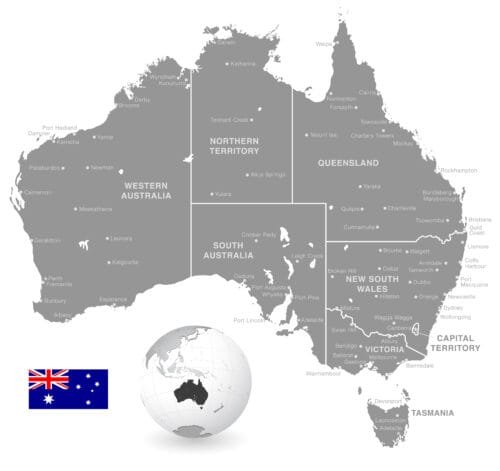Defining the Threat Environment in the Indo-Pacific
In the 21st century, the nature of conflict has evolved beyond conventional battlefields and traditional warfare. The Indo-Pacific—stretching from the eastern coast of Africa to the western shores of the Americas—has become one of the most contested regions on the planet, not just in terms of naval power or economic influence, but as a key arena for irregular and hybrid warfare.
Irregular warfare refers to conflicts involving state or non-state actors that employ asymmetric methods, such as insurgency, sabotage, subversion, and psychological operations, to achieve their political objectives. Hybrid warfare, on the other hand, blends conventional military force with irregular tactics and non-military means, such as cyber attacks, economic coercion, disinformation, and proxy militias, to destabilize adversaries below the threshold of open war.
The Indo-Pacific as a Hybrid Battleground
The Indo-Pacific’s strategic geography—home to 60% of the world’s population and some of its most vital sea lanes—has made it a natural focal point for competition between global and regional powers. This is especially evident in the emergence of “gray zone” activity—hostile actions that fall short of war but seek to erode adversary strength, legitimacy, or cohesion.
- China’s Maritime Strategy: One of the most visible manifestations of hybrid warfare in the region is China’s use of its People’s Armed Forces Maritime Militia (PAFMM)—a fleet of ostensibly civilian fishing vessels that engage in coordinated provocations, blockades, and surveillance in disputed waters of the South and East China Seas. These vessels operate alongside the Chinese Coast Guard and Navy in a layered sovereignty campaign.
- Cyber Attacks and Espionage: States like China and North Korea have been repeatedly linked to cyber intrusions across the Indo-Pacific, targeting everything from electoral systems in Australia to logistics systems in Japan and Indonesia. These operations often blur the line between criminal and state-backed activity, complicating attribution and response.
- Proxy Insurgency and Information Warfare: Hybrid conflict in Southeast Asia has also taken the form of information warfare and state support to non-state proxies. In the Philippines and Myanmar, state and non-state actors alike exploit social media to manipulate ethnic and sectarian narratives. Meanwhile, irregular groups utilize encrypted platforms to coordinate attacks, evade surveillance, and influence public perception.
- Critical Infrastructure Targeting: Undermining port networks, submarine cables, and electrical grids has become a priority for hybrid actors. The 2023 sabotage of undersea cables near Taiwan, suspected to be the work of Chinese cyber and naval forces, demonstrated how infrastructure can be silently degraded to pressure adversaries economically and psychologically.
A Region Under Pressure
The Indo-Pacific is a confluence of vulnerabilities:
- Fragmented defense partnerships
- Uneven state capacity across ASEAN
- Strategic distrust between major and minor powers
- Overlapping claims in disputed maritime zones
- High dependency on critical infrastructure with poor resilience
These fault lines are ripe for exploitation by both state adversaries and transnational actors who understand that destabilization doesn’t require tanks on a border, but rather the disruption of narrative, legitimacy, or societal trust.
In this environment, irregular and hybrid warfare thrive not in the absence of order, but precisely within its gray seams.
Australia’s Leadership and Defense Posture

As the strategic tide shifts in the Indo-Pacific, Australia has stepped forward to reshape its defense posture—no longer as a regional junior partner, but as a frontline contributor to collective security. This shift has been guided by a recognition that conventional deterrence alone is insufficient in the age of hybrid threats. From the restructuring of its armed forces to its role in multinational partnerships, Australia has begun to align its capabilities and strategy to meet the irregular challenge head-on.
Strategic Realignment: From Land Power to Indo-Pacific Posture
The 2024 Defence Strategic Review (DSR) marked a major shift in Australia’s approach to warfare and regional preparedness. Commissioned by the Albanese government, the DSR assessed force posture and strategic risks amid rapid tech change and growing competition. The review explicitly noted the erosion of the ten-year conflict warning time, a long-standing planning assumption. It emphasized the urgent need to prepare for both high-end warfare and non-linear, irregular competition across multiple domains.
Key takeaways relevant to irregular and hybrid warfare included:
- A shift toward littoral operations, with the Australian Army tasked to support operations in archipelagic environments.
- Increased emphasis on long-range strike, cyber, and electronic warfare.
- Strengthening the Joint Cyber Command and integrating information warfare cells within the force structure.
- The establishment of a National Defence Strategy, due in 2025, is expected to consolidate Australia’s response to irregular threats across all domains.
This is a clear doctrinal acknowledgment: future conflict may begin not with missiles, but with misinformation, cyber intrusion, and covert influence.
AUKUS and the Technology Frontline
Perhaps the most ambitious platform for Australia’s modernization is the AUKUS agreement—a trilateral partnership with the United States and the United Kingdom that extends beyond submarines. While media focus has centered on Australia’s acquisition of nuclear-powered submarines, the often-overlooked “Pillar II” of AUKUS includes deep collaboration on:
- Cyber capabilities
- Quantum computing
- Autonomous systems
- Artificial Intelligence
- Information sharing and integration
These tools are not just force multipliers—they are vital in hybrid scenarios where speed, perception management, and domain integration define success. AUKUS also grants Australia a seat at the table in shaping the ethical, tactical, and operational norms around these emerging capabilities.
Multi-Domain Integration and Force Multiplication
Australia’s military modernization emphasizes interoperability and agility. Recognizing its relatively modest force size compared to regional powers, the Australian Defence Force (ADF) has invested in precision-strike, distributed lethality, and digital integration.
- The Ghost Bat Program (formerly Loyal Wingman): A joint AI-enabled drone project with Boeing designed to support manned-unmanned teaming in contested airspace.
- LAND 400 and LAND 8113 programs: Designed to equip Army units with mobile, protected fire support and strike systems suited to mobile operations in the Pacific.
- Cyber and Space Commands: Recent institutional reforms have established unified commands for both offensive and defensive cyber and space-based intelligence, surveillance, and reconnaissance (ISR), reflecting a hybrid domain awareness.
Australia’s posture no longer assumes the tyranny of distance protects the homeland. Instead, it assumes networks, systems, and legitimacy must be defended well before physical borders are breached.
Coalition Building and Security Ecosystems
Australia’s leadership also derives from its deepening web of defense and security partnerships:
- Malabar Naval Exercises, conducted among the U.S., India, and Japan, showcase high-end maritime coordination.
- Talisman Sabre, hosted biennially with the U.S., includes over 13 allied nations and now integrates cyber-electromagnetic activities (CEMA).
- Indo-Pacific Endeavour: Australia’s flagship defense diplomacy deployment across Southeast Asia and the Pacific, designed to foster regional confidence and interoperability.
Beyond exercises, Australia maintains an intelligence edge through its collaboration with the Five Eyes alliance and the UKUSA Agreement. This partnership gives Australia unmatched access to strategic signals intelligence. Such access is essential for identifying and countering covert and irregular threats across the region.
Countering Foreign Interference and Cyber-Enabled Threats
Among the Indo-Pacific democracies, few have confronted foreign interference and cyber-enabled hybrid threats as systematically as Australia. Its experience over the past decade—spanning espionage, disinformation, and economic coercion—has shaped a proactive, often pioneering response. While Australia lacks the scale of larger powers, it has developed a robust legal and institutional framework that other liberal democracies increasingly look to as a model.
A Wake-Up Call: From Passive Posture to Legal Reform
Australia’s journey toward confronting foreign interference began with a series of high-profile warnings and political incidents in the mid-to-late 2010s. The Australian Security Intelligence Organisation (ASIO), in public statements and classified assessments, identified a surge in covert influence operations targeting academia, politics, and business.
By 2018, the federal government passed a sweeping package of laws aimed at foreign interference, espionage, and transparency. These included:
- The Foreign Influence Transparency Scheme (FITS) requires individuals and entities working on behalf of foreign principals to register with the Attorney-General’s Department.
- Expanded definitions of espionage, sabotage, and treason criminalize a broader array of covert political and technological transfers.
- Laws empowering security agencies to monitor and disrupt cyber operations and data exfiltration attempts from foreign intelligence actors.
These reforms were not theoretical. They were triggered in part by detailed revelations about attempted political donations by proxies for foreign states, efforts to sway parliamentary decision-making, and organized campaigns to suppress dissenting diaspora voices in Australia.
ASIO and the Changing Threat Profile
ASIO has evolved to meet the complexity of the hybrid threat landscape. The organization now prioritizes “insider threats,” clandestine influence networks, and online radicalization pipelines. In 2023, Director-General Mike Burgess warned publicly that foreign intelligence services were targeting Australian government employees, journalists, and business leaders using social engineering, data harvesting, and digital blackmail.
One significant challenge is that interference often occurs in the gray zone—activities that are deeply harmful but fall below the legal threshold for a response involving the use of armed force. As such, ASIO and allied agencies have focused on improving left-of-boom indicators—such as predictive modeling, behavioral analysis, and advanced network mapping—to detect interference before it metastasizes.
Cyber-Enabled Warfare: From Defense to Deterrence
Australia’s recognition of cyberspace as a warfighting domain has led to the development of both defensive and offensive capabilities:
- The Australian Signals Directorate (ASD) has expanded its mission to include offensive cyber operations authorized by the government. These are designed to pre-empt or disrupt adversarial planning across the Indo-Pacific.
- The Cyber Enhanced Situational Awareness and Response (CESAR) package provides threat intelligence to industry and local governments.
- Investment in public-private partnerships, particularly in the energy, finance, and telecommunications sectors, aims to protect national critical infrastructure from sabotage or ransomware threats.
The ASD’s “hack back” mandate, granted under classified directives, has reportedly been used to dismantle foreign disinformation nodes and disrupt malware delivery networks attributed to both state and state-tolerated actors.
Australia’s cyber doctrine now recognizes that in the age of hybrid warfare, digital sovereignty is as critical as territorial sovereignty.
Public Education and Civil Resilience
Countering hybrid threats also requires societal awareness. The Australian government has launched several initiatives to raise public resilience against disinformation and digital manipulation:
- The “Stop and Consider” campaign warns against spreading unverified claims online, especially during elections or security incidents.
- Collaboration with major platforms, including Facebook, Twitter (X), and TikTok, aims to flag foreign-sponsored content and enhance algorithmic accountability.
- University partnerships, like those with the University of Canberra’s News and Media Research Centre, support long-term studies on trust, news literacy, and foreign influence.
These efforts recognize that while the military and intelligence services serve as a shield, civil society remains the frontline in resisting psychological and ideological subversion.
Regional Challenges and Constraints
Australia has made clear progress in building capabilities to counter hybrid and irregular threats. However, it operates in a region defined by complexity, competing narratives, and structural constraints. Internal resource limitations and diplomatic balancing acts remain persistent challenges. These factors shape both the limits and possibilities of Australian leadership in Indo-Pacific security.
Strategic Balancing: China, the U.S., and the Tightrope of Influence
Perhaps the most enduring challenge for Australia is its dual dependency: a security reliance on the United States and an economic interdependence with China.
- China remains Australia’s largest trading partner, accounting for nearly 30% of Australia’s exports, primarily iron ore, coal, and agricultural products.
- At the same time, the U.S. is Australia’s closest strategic ally under the ANZUS Treaty, and military interoperability with American forces underpins much of Australia’s deterrence posture.
This duality became sharply apparent during periods of geopolitical friction. In 2020–2021, following Canberra’s call for an independent inquiry into the origins of COVID-19, Beijing imposed a raft of informal trade sanctions. Simultaneously, Australia deepened defense ties with Washington through AUKUS and regional Quad cooperation.
This highlights a broader challenge: asserting sovereignty and defending liberal norms without appearing to form a containment bloc. Many Southeast Asian nations judge Australia’s credibility not just by its capabilities. It also depends on avoiding securitized diplomacy and maintaining inclusive, non-hegemonic regional engagement.
Military Capacity vs. Strategic Ambition
The Defence Strategic Review outlined ambitious goals, but Australia’s defense capacity remains stretched. Challenges include:
- Personnel Shortages: The ADF’s recruitment and retention efforts have struggled to keep pace with the rising demand. As of 2024, the force was still thousands of personnel short of its targeted end strength.
- Capability Gaps: The acquisition of nuclear-powered submarines under AUKUS is projected to take decades, leaving a “capability gap” in undersea deterrence. Similarly, programs to field long-range strike and autonomous systems are in their early stages.
- Sustainment and Supply Chain Risk: Australia’s defense industry is growing, but it remains heavily reliant on foreign suppliers, particularly for advanced electronics and missile components. In the event of supply chain disruption, its ability to sustain high-end operations could be limited.
These constraints shape Australia’s strategic calculus, focusing on coalition integration, asymmetric capabilities, and force-multiplying technologies rather than mass or dominance.
Regional Trust Deficits and Strategic Messaging
Despite close partnerships with countries like Japan, India, and the U.S., Australia’s efforts to expand security cooperation in the Pacific Islands and Southeast Asia have sometimes faced skepticism or resistance.
- Pacific Island leaders have raised concerns about militarization and climate security imbalance, suggesting Australia’s defense diplomacy may overshadow other urgent regional priorities.
- ASEAN states, while receptive to joint training and capacity-building initiatives, often view AUKUS and Quad initiatives with caution, as they are wary of being drawn into a great-power confrontation.
To succeed, Australia must navigate sensitive diplomatic terrain, offering inclusive and transparent engagement rather than exclusivity in security clubs.
This includes:
- Expanding humanitarian and disaster response (HADR) missions as a soft-power lever.
- Deepening language and cultural literacy within defense and diplomacy communities.
- Enhancing regional capacity-building programs in cyber defense, maritime domain awareness, and counter-disinformation operations.

Civil-Military Friction and National Cohesion
Domestically, Australia faces its own civil-military friction points, which may constrain the whole-of-nation approach necessary for countering hybrid threats. Issues include:
- Disinformation in domestic politics: Foreign influence campaigns have occasionally intersected with polarizing debates over immigration, climate change, and national identity.
- Trust in institutions: While the ADF remains one of the most trusted institutions, public skepticism toward intelligence agencies and political decision-makers complicates unified messaging in times of crisis.
- Media fragmentation: The rise of alternative media and growing distrust in algorithmic feeds, particularly among Gen Z, has created both opportunities and vulnerabilities in information environments.
If hybrid warfare is as much about perception and trust as firepower, Australia’s domestic information resilience will be just as important as its external deterrence.
Strategic Projections and Future Directions
Australia’s approach to irregular and hybrid threats shows a nation rethinking its security role in an evolving region. Ambiguity, strategic competition, and persistent low-intensity conflict are reshaping the Indo-Pacific landscape. Canberra’s policy shifts, tech investments, and regional diplomacy reflect a broader strategic recalibration. The next decade will likely be defined not by one doctrine or platform. Instead, success will depend on Australia’s ability to adapt to emerging forms of coercion and confrontation.
Proposal: An Indo-Pacific Hybrid Threats Centre
One major regional gap is the absence of a multilateral framework focused on detecting and countering hybrid threats. Europe has such a mechanism through the EU Hybrid Fusion Cell and the Centre of Excellence in Helsinki. These institutions support scenario planning, intelligence sharing, and resilience building among member states.
Australia is well-positioned to propose or co-lead an Indo-Pacific equivalent—a Hybrid Threats Centre involving ASEAN members, Pacific Island states, and key Quad and AUKUS partners. Such a center could:
- Serve as an early warning node for disinformation, cyber intrusions, and infrastructure sabotage.
- Provide training modules and tabletop exercises on detecting and mitigating irregular warfare.
- Host a rotating fellowship or liaison program for defense and civil society professionals.
- Develop a library of best practices for countering gray zone tactics without escalating to kinetic conflict.
Anchored in Sydney, Brisbane, or Singapore, such a center could become the backbone of regional resilience against coercive non-kinetic threats.
Integrating Cyber, Kinetic, and Informational Domains
As irregular warfare becomes increasingly entwined with cyber, space, and information operations, Australia’s future doctrine will need to do more than adapt—it must integrate. Strategic projections suggest that by 2030, Australia will field:
- A mature offensive cyber capability, capable of preemptive disruption against hostile state proxies.
- Enhanced space-based ISR and geospatial analytics for real-time hybrid threat detection.
- A dedicated information warfare command within the ADF, aligned with psychological operations and strategic communication needs.
This convergence will mark a new operational concept—multi-domain irregular deterrence—where messaging, disruption, and infrastructure hardening are applied in concert.
Expanding Strategic Communication and Influence
One of the lesser-developed areas of Australia’s hybrid toolkit is influence and counter-narrative operations. While the U.S. and UK have well-resourced strategic communication capabilities (e.g., the U.S. Global Engagement Center), Australia has typically outsourced or under-prioritized the influence domain.
Future projections call for:
- A centralized strategic communications cell to coordinate across DFAT, ADF, ASD, and the intelligence community.
- Investments in AI-driven narrative analysis and social media trend mapping.
- Training for military and civilian spokespersons in counter-disinformation and regional narrative sensitivity.
In the Indo-Pacific, where influence is often exercised subtly—through commercial incentives, cultural diplomacy, or diasporic mobilization—Australia will need to compete not with volume, but with precision and cultural fluency.
Building Norms for Hybrid Warfare Restraint
While much of the focus has been on capability development, Australia is also poised to play a leading role in setting norms. As a middle power with credibility across the liberal international order and regional forums like ASEAN, Australia can:
- Advocate for regional non-aggression pacts on infrastructure targeting.
- Promote joint statements on cyber sovereignty and restraint.
- Lead in the creation of legal frameworks to define gray zone thresholds and response legitimacy.
This is soft power, but not passive power—it’s the shaping of a rules-based environment that blunts the effectiveness of hybrid coercion without requiring continuous escalation.
Conclusion: Australia at the Frontline of Hybrid Deterrence
As the Indo-Pacific becomes the epicenter of strategic friction, irregular and hybrid warfare are no longer peripheral considerations—they are core challenges to regional stability. In this environment, Australia’s evolution from a traditionally reactive middle power to a proactive stakeholder in hybrid warfare marks one of the most consequential strategic shifts in the region’s security architecture.
Through its investments in cyber capabilities, maritime power projection, and legal frameworks against foreign interference, Australia is laying the groundwork for a new form of deterrence—one that is anticipatory, layered, and multi-domain.
Yet leadership in this arena is not guaranteed. Australia must overcome internal constraints, strengthen its messaging architecture, and foster regional trust and confidence. Its credibility will hinge not only on its capabilities but on its restraint, reliability, and vision for a free and resilient Indo-Pacific.
In an era when battles may unfold over submarine cables, mobile networks, or public perception, Australia’s frontlines are no longer just physical—they are infrastructural, informational, and institutional.
Source List
- Australian Department of Defence. (2023). Defence Strategic Review 2023. https://www.defence.gov.au/about/reviews-inquiries/defence-strategic-review
- Australian Signals Directorate. (2024). Cyber Threat Report: Australia 2023–24. https://www.cyber.gov.au
- ASIO. (2023). Annual Threat Assessment. https://www.asio.gov.au/threat-assessment
- Carnegie Endowment for International Peace. (2024). Operationalizing U.S.-Australia Regional Defense Strategies. https://carnegieendowment.org
- European Centre of Excellence for Countering Hybrid Threats. (2024). Hybrid CoE Strategy Documents. https://www.hybridcoe.fi
- Financial Times. (2024, April 17). Australia boosts defense budget in shift toward deterrence. https://www.ft.com
- Lowy Institute. (2023). Interference, Influence, and Indo-Pacific Resilience. https://www.lowyinstitute.org
- The Strategist – Australian Strategic Policy Institute. (2024). Why the Indo-Pacific needs its own hybrid threats centre. https://www.aspistrategist.org.au
- U.S. Department of State. (2023). Global Engagement Center Annual Report. https://www.state.gov
- University of Canberra News and Media Research Centre. (2023). Digital News Report: Australia. https://www.canberra.edu.au
- Wikström, C. (2023). Countering Hybrid Threats in the Indo-Pacific: Lessons from Europe. Center for Strategic and International Studies. https://www.csis.org
DISCLAIMER: Links included might be affiliate links. If you purchase a product or service with the links that I provide I may receive a small commission. There is no additional charge to you.





Leave a Reply